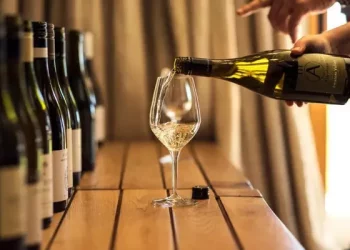Sparkling wine is a type of wine that is characterized by its effervescence and bubbles, which are produced by carbon dioxide gas that is trapped in the wine. The process of making sparkling wine is a complex and time-consuming one that involves several steps, including the selection of grapes, the primary and secondary fermentation process, and the aging and bottling of the wine.
Grape Selection
The first step in the process of making sparkling wine is to select the right grapes. Sparkling wines are typically made using one or a combination of three types of grapes: Chardonnay, Pinot Noir, and Pinot Meunier. The grapes are carefully chosen for their high acidity levels, which help to balance the sweetness of the wine and provide a crisp, refreshing flavor.
Primary Fermentation
Once the grapes have been selected, they are pressed and the juice is separated from the skins. The juice is then fermented in stainless steel tanks or oak barrels, where yeast and sugar are added to begin the primary fermentation process. During this process, the yeast consumes the sugar and converts it into alcohol, which will later contribute to the wine’s alcohol content.
Secondary Fermentation
The next step in the production of sparkling wine is the secondary fermentation process. This is the process that creates the bubbles and effervescence in the wine. The wine is transferred to a closed bottle, where yeast and sugar are added. The yeast then ferments the sugar in the bottle, producing carbon dioxide gas, which is trapped in the wine and creates the bubbles. This process can take several months, or even years, depending on the type of sparkling wine being made.
Aging
Once the secondary fermentation process is complete, the sparkling wine is aged. During this time, the wine undergoes a process known as “autolysis,” which involves the yeast breaking down and releasing flavors into the wine. The aging process can vary greatly depending on the type of sparkling wine being made, with some wines being aged for only a few months, while others are aged for several years.
Disgorgement and Bottling
The final step in the production of sparkling wine is the disgorgement and bottling process. During this process, the sediment created during the secondary fermentation process is removed, and the wine is sweetened with a dosage of sugar and wine. The wine is then corked and sealed with a wire cage, to prevent the carbon dioxide gas from escaping.
In conclusion, the production of sparkling wine is a complex and time-consuming process that involves several steps, including the selection of grapes, the primary and secondary fermentation process, aging, and the disgorgement and bottling of the wine. The result is a refreshing and effervescent wine that is enjoyed by people all over the world.












































